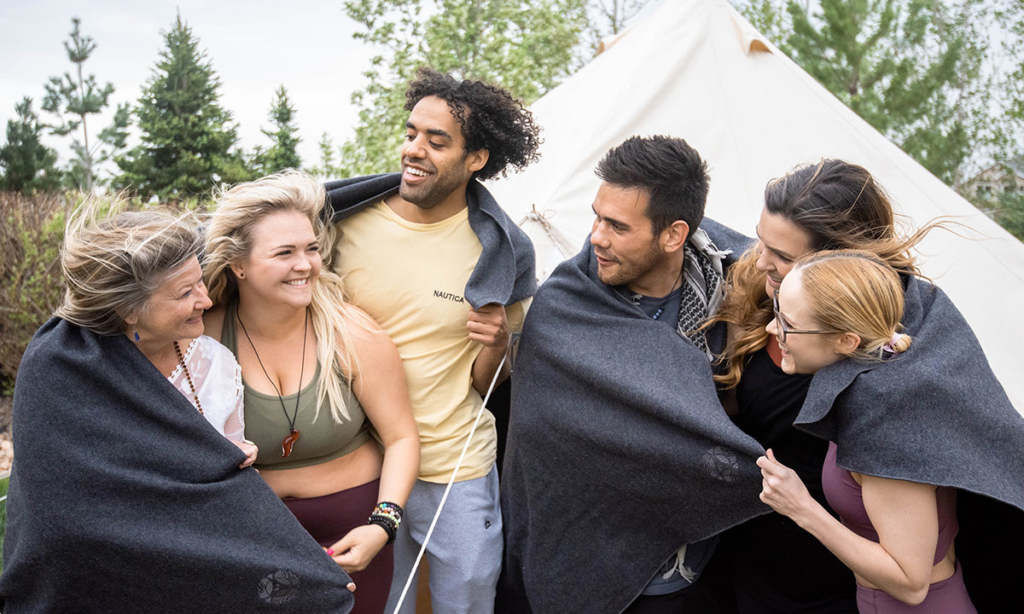
What does a yoga community look like? If you go by photos on social media, you’re likely to picture endless sea of yoga mats, their occupants performing mirror-image poses of one another. Sometimes finding the microphone-adorned teacher is akin to playing “Where’s Waldo?”
These photos, while they may depict reality for some of the yoga world’s best-known teachers, are not reality for the thousands of teachers across the country that teach regular classes in studios, gyms, church basements and community spaces around the country. Most of us teach to groups much smaller than this, and while we may not pull in the kind of revenue that large workshops bring, we are each building a yoga community that can not be fostered in a weekend.
Does Size Matter in a Yoga Community?
This morning I left a class of 10 students—certainly not many by today’s standards—feeling enormously grateful. What I observed that made me so happy was this: A student came to class this morning after being gone for two weeks. Three others welcomed her back and discussed her trip with her, asking questions—truly interested. Three others lingered a bit after class to talk about gardening. Several compared notes about the difficulties of caring for parents in decline. When I drove away, a circle of three students was standing in the morning sun, blankets and mats in hand, engaged in conversation.
Of course they come for the practice, but more important to me, my students come for their yoga community, for the relationships they have developed with each other over the years. Of the 10 students in today’s class eight have been attending this class for five years or more. Four of them are pushing 20 years in the class. Although my evening classes are more populated (up to 20 students), the longevity of the sangha is similar. When a new person joins my classes, he/she is welcomed in like family by my longstanding students.
What’s Your Perfect Sangha Size?
Many teachers and students love to participate in classes of 40 to 50 people, where students pack the room, mat to mat. The group energy of a big class is infectious, and there are teachers—the more extroverted ones—that can easily hold a space for large groups. Still, some students feel lost in large groups. It’s hard for teachers to tend to individual needs in a very large class.
I’ve long since let go of the idea of teaching to throngs. I am an introvert. Even if I wanted to teach to huge groups, I’m not sure I could do so effectively. I’ve effectively taught workshops of 35 students, but the thought of 50 or more doesn’t resonate. I simply feel more comfortable in small groups.
Yoga Communities Come in All Sizes
If I were attached to the idea that the best teachers attract the biggest numbers of students, I would be depressed. Teachers with far less experience than I have are teaching to huge classes at popular studios. But over the years I have come to appreciate the blessing of teaching classes small enough that I can get to know each person on some level, and that my students can get to know and appreciate each other. When I watch how my students relate to each other, I feel truly blessed. Our yoga community is deeply rooted, from years of weekly meetings. We’ve been present and supportive through each others’ triumphs and challenges. We’ve seen each other age—all of us—and recognize the beauty of our big and small evolutions. We look after each other. We learn from each other.
So if, as a new (or experienced) teacher, you find your class numbers eclipsed by those of others, don’t buy into the idea that the size of your class is a measure of your worth as a teacher. Know that by hosting a small group, you have the opportunity to co-create a yoga community of deep, lasting friendships. The larger yoga community can accommodate all kinds of classes—from big, mat-to-mat classes to small, intimate sanghas. What’s important is that you know, as a teacher, which fits your personality and teaching style the best.
Does size matter? Only in the sense that you stay true to a size that fits the kind of community you want to develop. Whether you teach four or forty students matters not at all. What matters is that you commit yourself completely to the students who honor you with their presence. What kind of yoga community do you want to cultivate?
